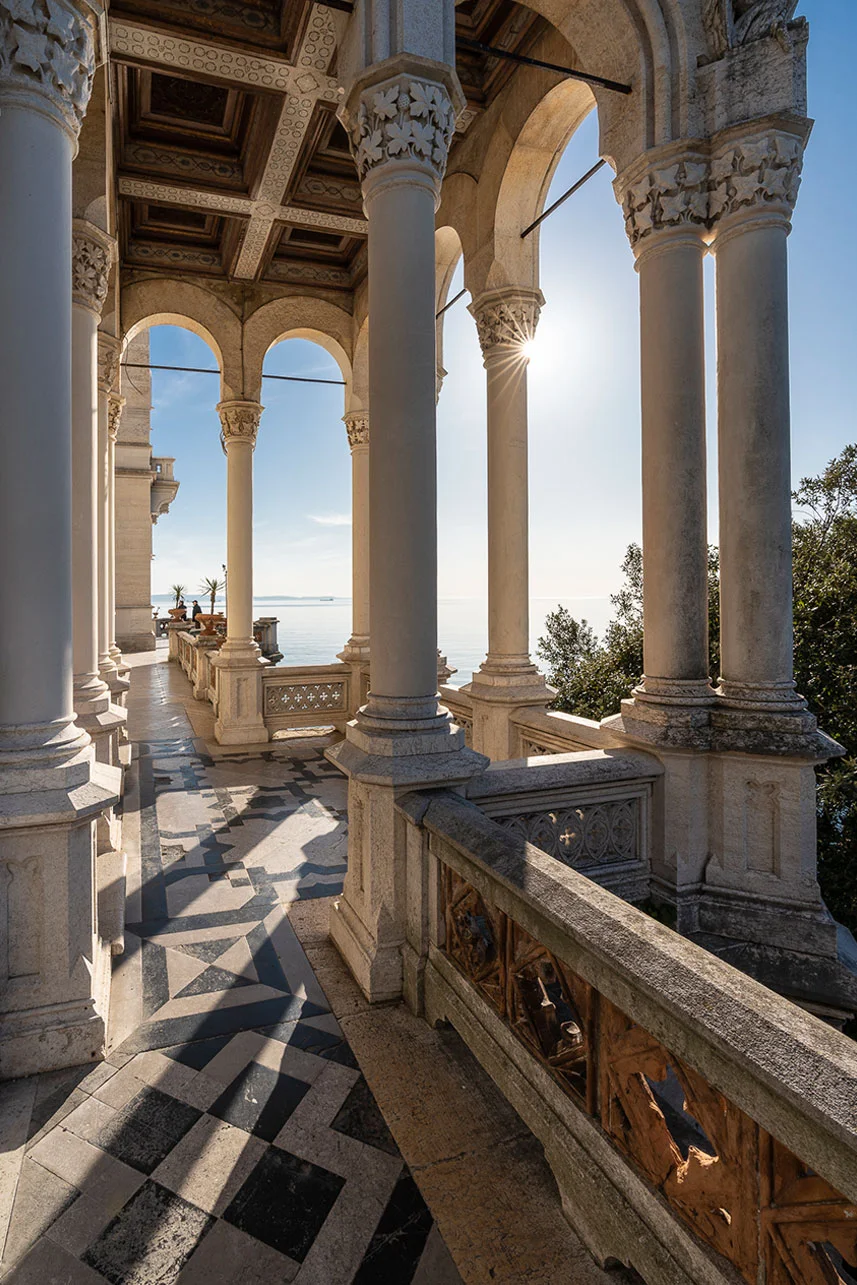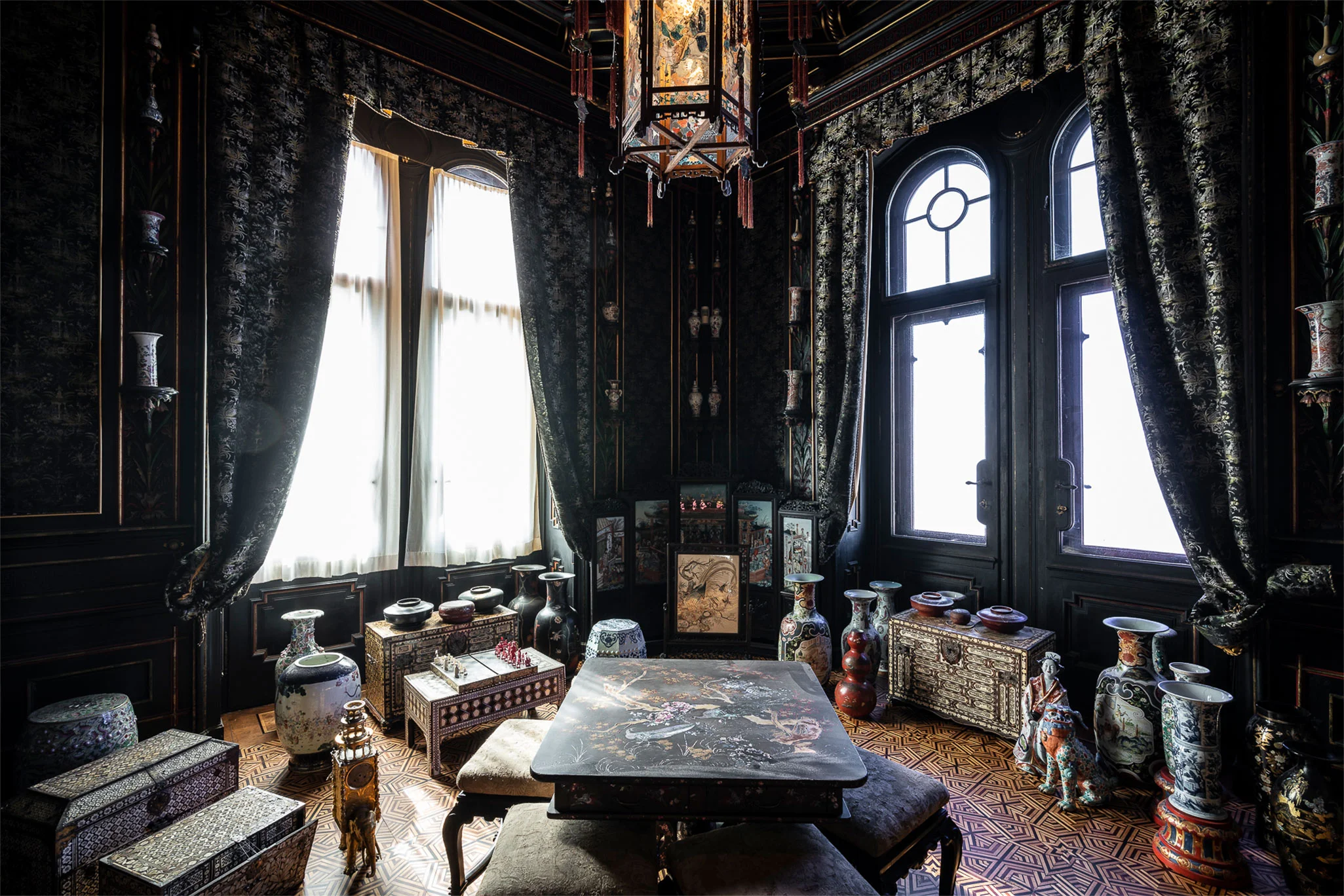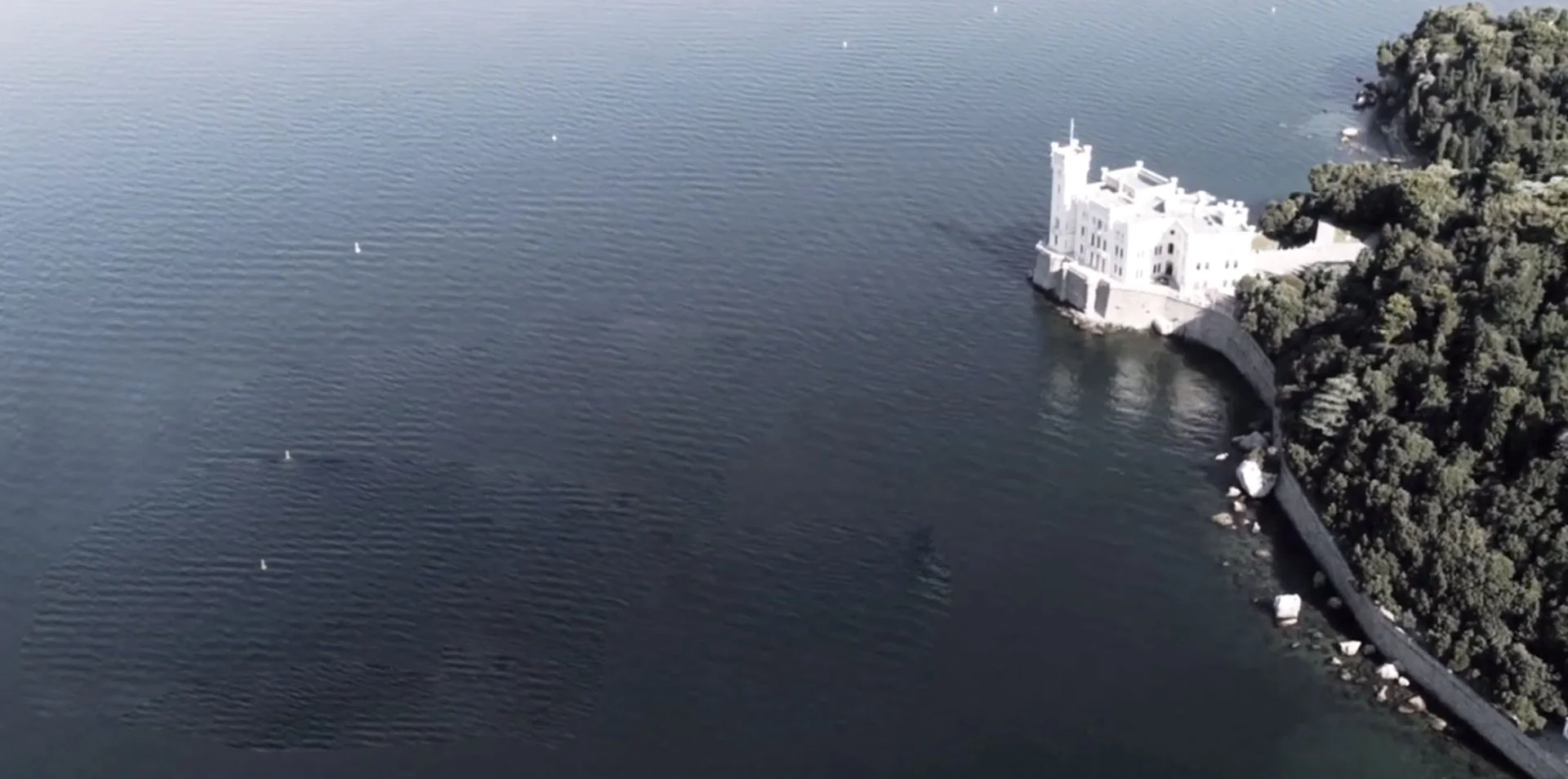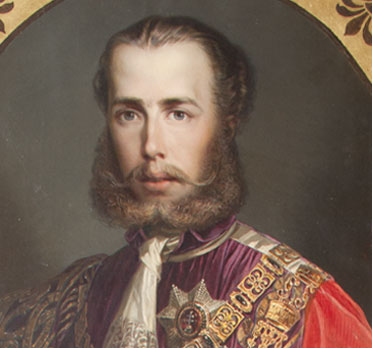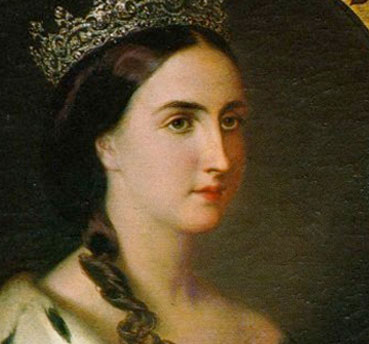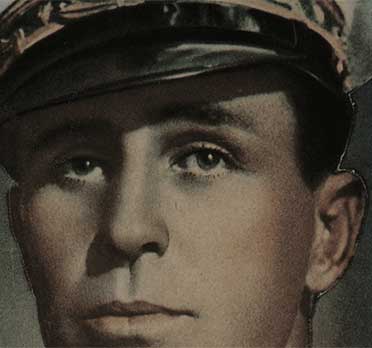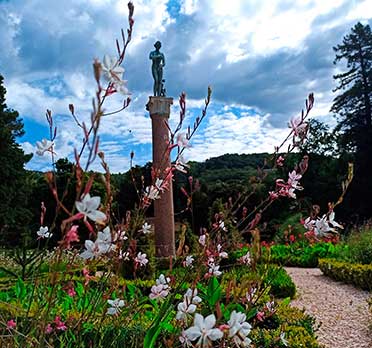In 1930, the Italian government designated Miramare Castle as the residence of Duke Amedeo of Savoy-Aosta. Alberto Riccoboni, architect of the Regia Soprintendenza alle Belle Arti (Italian Royal Superintendency of Fine Arts) supervised the project for the architectural renovation of the castle, which needed to be adapted to the Duke’s modern requirements.
Some of the more redundant decorations were removed from the castle’s rooms, which were revamped with functional furnishing in which aesthetics was matched by the utmost practicality. This is especially true of the furniture in rationalist style to which the left wing of the second floor still bears witness today. The Duke’s private apartments, which in the past also continued to the “mezzanin,” the top floor with lower ceilings, can be visited here.
The renovation of the castle in the Duke’s days was not only aesthetic: the genio civile, the Italian public works department, provided the building with two lifts, telephone lines, a neon lighting system, running water and radiators.
The duke resided in the castle from 1931 to 1937, when he was appointed viceroy of Ethiopia, while his wife Anne of Orleans and daughters Margherita and Maria Cristina continued to live there, albeit occasionally, until the first half of 1943.
During this period, however, visitors could access the upper part of the Park, as well as the Castelletto, which was furnished with Maximilian’s furniture that the duke did not keep in the Castle.
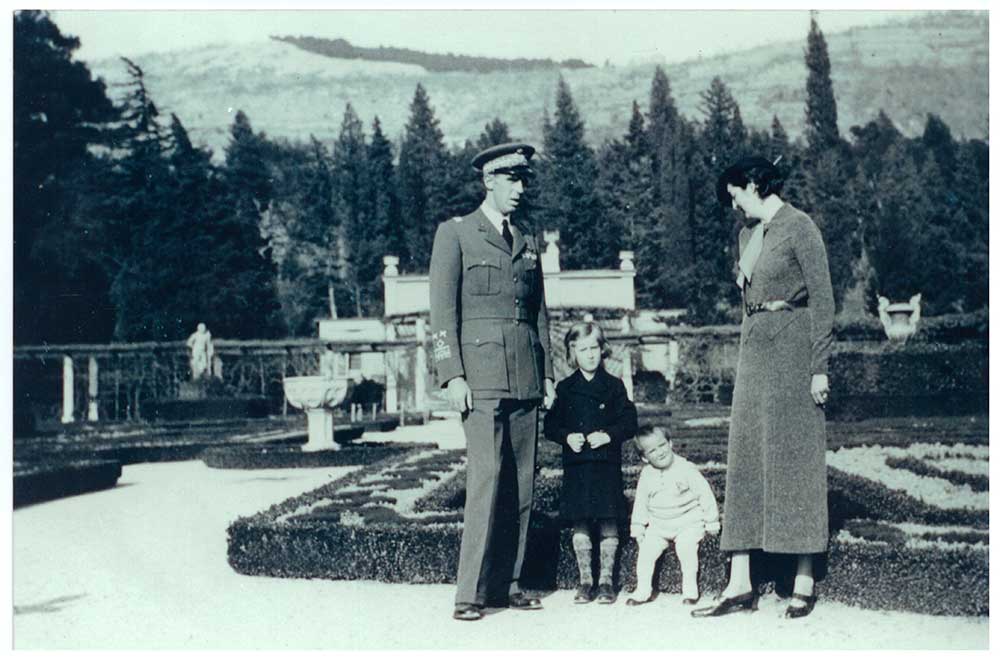
THE THIRTIES
In 1931, Duke Amedeo of Savoy-Aosta with his wife, Anne of Orleans, and eldest daughter, Margherita, settled in Miramare Castle.
The period the dukes spent in Trieste was brief, but it left indelible traces on the castle and the park: the residence, which had not been regularly inhabited for almost seventy years, was adapted to the needs and tastes of the new princes. These rooms, where their private apartments were located at the time, evoke the architectural transformations that Miramare underwent in those years.
The rooms adapted to the rationalist and art deco styles of the 1930s epitomised the desire to mark the transition to a new historical and cultural period. The furniture, paintings and objects that belonged to the dukes allude to the obligations of public life and the intimacy of their private lives.
ENTRANCE
BUST OF AMEDEO OF SAVOY-AOSTA
Romano Romanelli
Bronze, 1959
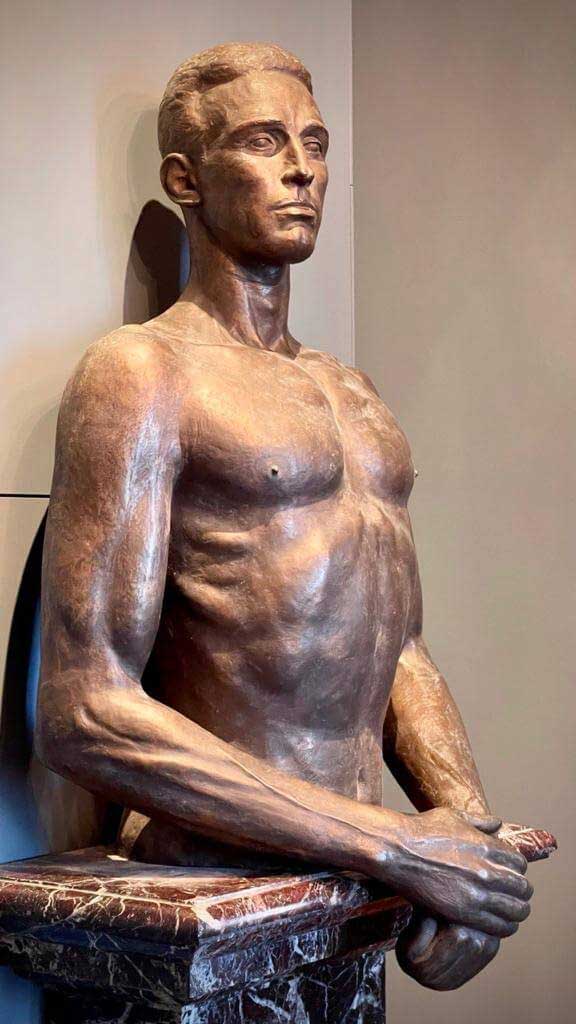 An emblematic work of the vigorous conception of art that requires physical as well as spiritual strength, the bust of Amedeo of Savoy-Aosta is a heroic portrait with a D’Annunzio-esque flavour that reveals the moral fibre and athletic might of the Iron Duke. Stylistically it follows in the footsteps of the Etruscan-Tuscan tradition, which the author, the Florentine Romano Romanelli, was very familiar with. He succeeded in establishing a fertile dialogue between it and the contemporary soul and consciousness.
An emblematic work of the vigorous conception of art that requires physical as well as spiritual strength, the bust of Amedeo of Savoy-Aosta is a heroic portrait with a D’Annunzio-esque flavour that reveals the moral fibre and athletic might of the Iron Duke. Stylistically it follows in the footsteps of the Etruscan-Tuscan tradition, which the author, the Florentine Romano Romanelli, was very familiar with. He succeeded in establishing a fertile dialogue between it and the contemporary soul and consciousness.
The sculpture, donated in 1959 by Duchess Anne of France, Amedeo’s widow, to Miramare Castle, was cast by the same artist who replicated Amedeo’s bust modelled in 1933, which is kept at the Gallery of Modern Art in Turin.
Romanelli was present from 1937 with Duke Amedeo in Ethiopia, to design the Monument to the Legionnaire, which was to be built in Addis Ababa to commemorate the Italian colonisation of East Africa. The sculptural group, whose production was halted by the war and resumed after the fall of the regime, was donated by the Italian government to Syracuse, after being duly modified.
Romano Romanelli
(Florence 1882 –Florence 1968)
A sculptor and medallist, son of Raffaello and grandson of Pasquale Romanelli, both famous sculptors, he was a staff officer in the Royal Navy and fought in the Libyan War and World War I. A pupil of Domenico Trentacoste, representative of neo-fifteenth-century eclecticism, he became famous in 1910 with the colossal Hercules wrestling the lion and frequented the artists gravitating around Rodin’s studio, particularly Émile-Antoine Bourdelle, in Paris in 1912.
With his adherence to fascism, from 1919, he adopted a more aggressive style: the high relief of Romulus tracing the furrow of Rome’s foundation (Rome, palace of the Ministry of Corporations), modelled in 1926, offers a tangible image of Romanelli’s idea of fascism, a celebration of the prevailing ideology that through an essential style reconnected with the myths already belonging to the nationalist repertoire of the early twentieth century.
In 1930 he received the prestigious post of Academic of Italy with the support of Mussolini.
PUBLIC LIFE
In addition to directing the renovation and refitting works in the apartments for the dukes, the architect Alberto Riccoboni was responsible for designing all the furniture for the renovated rooms. The duke’s study was created in the castle’s historic library, where the architect created four different blocks of furniture, consisting of a sofa, leather armchairs, upholstered chairs, tables, cabinets, and the desk. The latter has the appearance of a compact parallelepiped with geometrically shaped feet. To the left of the space for the chair, there is a door with file drawers, topped by several compartments for stationery. Pressing a button hidden under the top shelf opens a secret compartment. On the right, there are two drawers and another compartment closed with a door. Finally, two additional shelves can be pulled out from the top edge of the desk. The desk is made of solid wood, veneered with Caucasian walnut and Macassar ebony. At the wishes of the duke, the furnishings for his apartments were commissioned from local craftsmen. The “Francesco Zanetti” firm was commissioned for the furniture and its shopwindow at No. 2 of Via Diaz displayed the duke’s desk with some other furniture for a few days, as documented by an article in the local Trieste newspaper Il Piccolo.
- Still life with globe, oil on canvas, 1931
- Map of Libya, oil on canvas, 1930
- Map of Eritrea, Somalia and Abyssinia, oil on canvas, 1930
The three works all share the same themes, namely exploration and conquest, celebrated through the evocation of Italy’s greatest navigators, whose names can be read on the cartouches of the Still Life with World Map, and through the cartographic representation of Italy’s East African colonial empire. They were originally placed in the Duke of Aosta’s study, located in the library, along with the two panels depicting African landscapes by the same author.
These works of geographic inspiration are further proof of Umberto Noni’s skill in painting large ornamental maps reminiscent of those of the Renaissance, a subject he already had experience with from commissions from shipping companies to decorate the interiors of cruise ships. Some details stand out, such as the vivid glimpse of the marine flora of the Indian Ocean and the scene with Amedeo of Aosta on horseback, flanked on the left by the banner of Libya and on the right by Saharan tribesmen.
The Still Life with Globe features at the centre a reproduction of the famous, and enigmatic, Savoy motto FERT, originated in the fourteenth century and interpreted here as an acronym of Fide Enixi Robore Tentavere (“Relying on faith they tried by force”), a phrase apt to exemplify the exploits of both the members of the House of Savoy and the great navigators mentioned.
- Portrait of Elena of Montenegro, Queen of Italy, oil on canvas, 1931
- Portrait of Victor Emmanuel III, King of Italy, oil on canvas, 1930
Gino Parin
(Trieste 1826 – Bergen Belsen 1944)
In the 1930s, Gino Parin was a renowned portrait painter in Italy whose popularity was consecrated by the solo exhibition he held in Rome’s Palazzo Doria in 1930. On the occasion Parin was introduced to the king of Italy, to whom he donated an album with fifty reproductions of his paintings; shortly thereafter Duke Amedeo of Aosta commissioned him to execute portraits of Italy’s sovereigns for the Audience Room of the Castle of Miramare.
Victor Emmanuel III is depicted, in military uniform, standing against the backdrop of the Park of Miramare, while his wife is portrayed in an armchair in the castle’s throne room: Elena of Montenegro’s seated pose was a ploy used by the painter to conceal how much taller she was than her husband, known for his short stature.
This is an example of portraiture of the highest quality, despite Parin’s difficulties, as the sovereigns did not grant him posing sessions and he had to make due with recent photographs.
Fine chromaticism and the absence of any rhetorical overtone lent extreme vividness to the paintings, which are considered to be among the best of the painter’s works. Unfortunately, the fame he achieved did not spare him the atrocities of the Second World War. Of Jewish descent, Gino Parin, was excluded from all exhibition activities after the promulgation of the racial laws and died in the Bergen Belsen concentration camp in 1944.
A curio worth noting is the word Kaiserin (“Empress”) on the frame of Victor Emmanuel III’s portrait: since Amadeus of Aosta decided to reuse the nineteenth-century frames that originally enclosed the portraits of Emperors Franz Joseph and Sissi, symbolising that the splendours of the Kingdom of Italy had succeeded those of the Austro-Hungarian monarchy.
PRIVATE LIFE
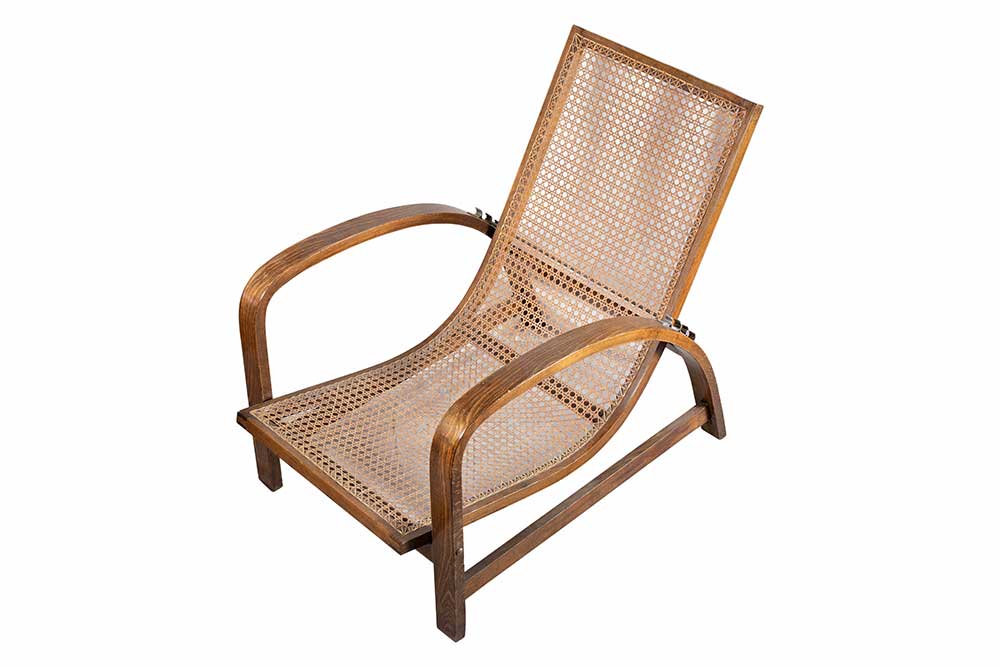 Among the furniture in Duke Amedeo of Aosta’s apartments, almost entirely made locally by skilled artisans in Trieste, is a unique wicker deck chair, imported from Czechoslovakia as we know from the “Fischel” mark affixed under the chair. The chair can be dated to the 1930s, when the elaborate, rather pronounced curves, one of the factory’s distinctive features, disappeared, giving way to a modern design that favoured comfort and an essential aesthetic with less calligraphic lines.
Among the furniture in Duke Amedeo of Aosta’s apartments, almost entirely made locally by skilled artisans in Trieste, is a unique wicker deck chair, imported from Czechoslovakia as we know from the “Fischel” mark affixed under the chair. The chair can be dated to the 1930s, when the elaborate, rather pronounced curves, one of the factory’s distinctive features, disappeared, giving way to a modern design that favoured comfort and an essential aesthetic with less calligraphic lines.Of the many firms that proliferated, especially in the Austria-Hungary Empire, Fischel Söhne of Niemes, Bohemia, was among Thonet’s major competitors in the world of bent beechwood. Only a year after Gebrüder Thonet’s patent was liberalised in 1869, did David Gabriel Fischel go from being a vegetable oil trader in Prague to a manufacturer of furniture “in the Thonet style,” founding his own company together with his sons. David Gabriel’s eldest son, Alexander Fischel, was well acquainted with the technique and the secrets of wood bending, as he had worked as an employee in the Thonet factory in Koritschan and was thus able to put together furniture of great execution difficulty.
The trademark would soon become simply “Fischel” to make it readable to buyers who were not necessarily German-speaking and thus conquer the international market. Fischel was the first company to design solid wood curves. From its beginnings it would focus on high quality, gradually increasing the number of models exponentially, while reducing generic ones and filling uncovered niches in the luxury market.
UMBERTO NONI
(Trieste 1892 – Rome 1971)
- Beach with antelopes and birds, oil on canvas, 1931
- Jungle with rhinoceros and leopard, oil on canvas, 1931
The protagonist of the two works is the African landscape so familiar to Duke Amedeo of Savoy-Aosta, captured in sun-drenched vistas of brilliant colours, in keeping with that D’Annunzio-esque exotic and animalier taste in vogue in the 1930s. The essentiality and sharpness of the images were the hallmark of the fruitful activity of the author, Umberto Noni from Trieste, in the field of magazine illustration and advertising posters.
The foreground depiction of some pineapples, to the right of the antelopes, seems to be a deliberate reference to the fruit wanted by Maximilian of Habsburg as a ubiquitous ornamental feature in his mansion.
The vertical format was designed to fill the space, narrow in width, between the windows of Amedeo’s study, located in the library, uniting the two maps and a still life, these too by Noni.
- Portrait of Emanuele Filiberto of Savoy-Aosta, oil on canvas, 1933
- Portrait of Helene of Orleans, oil on canvas, 1933
The two canvases allow us to capture the strong personalities of Amedeo of Savoy-Aosta’s illustrious parents, Emanuele Filiberto and his wife Helene of Orléans. The signature on both paintings is by the Neapolitan artist Carlo Siviero, who indicated Capodimonte as the place of execution. Portraiture was Siviero’s main genre of expression among his varied production, both for his formal skill and his careful introspective reading.
The Duchess of Aosta is portrayed amid two greyhounds, while Emanuele Filiberto is depicted in military uniform against the backdrop of a karst landscape. In the lower left-hand corner, a pastern, helmet, and map emphasize the soldierly characterization of the Duke of Aosta, celebrated commander of the Third Army, called the Invitta because it was never defeated in the fighting on the karst during the First World War.
The two works, which are influenced by a certain style typical of Art Deco posters, were placed in the Conversation Room of Miramare Castle, where they replaced the portraits by the artist from Trieste, Giannino Marchig (1897 -1983), having the same subject. The current whereabouts of Marchig’s paintings are unknown; they were replaced at the behest of Amedeo’s wife, who apparently did not like them.
Carlo Siviero
(Naples 1882 – Capri 1953)
Painter, sculptor and art critic, Carlo Siviero began his evening painting studies in Naples under Tommaso Celentano and later attended the Academy of Fine Arts in Naples and the Free School of the Nude in Rome. After an early phase of production focused on themes of the countryside, the sea and workshops, he turned to figure painting. Traveling to major European art centres, he came in contact with the Dutch Impressionists and the great English portrait painters, who brought his style to full maturity. In 1921 he was elected president of the Royal Academy of San Luca and in 1922 he was appointed member of the High Council of Fine Arts; in 1930 he accepted the chair of painting at the Academy of Naples, and then moved to the Academy of Rome, of which he became director.
In 1950 he published the book Questa era Napoli, This was Naples, as a tribute to the Neapolitan artistic environment of the late 1800s.
Tableware of the dukes of Aosta
A large collection of tableware that belonged to the dukes is still kept at Miramare, with examples of every category used for the table and serving. There is an extensive number of plates of all types: plain, soup bowls, serving dishes, fish dishes, and then, bowls, soup bowls, gravy boats, and fruit stands. There are numerous tea and coffee sets, with cups and saucers of various sizes, milk jugs, teapots and sugar bowls. There are countless glasses, with different shapes and uses: red wine, white wine, liqueur, punch, and fruit in syrup. A dozen jugs are also preserved. Finally, there are several cutlery sets, some complete, some made of silver. The porcelain sets bear the mark of the prestigious Manifattura Richard Ginori, founded in Doccia, Tuscany, in 1735, and which over time has become one of the most exclusive porcelain manufacturers. The Richard Ginori porcelain from Miramare is characterised by the distinctive gold thread on the edges and the Savoy crown.
THE DUCHESS’S SITTING ROOM
Vases and figurines, 1932-1935
The author of these works was Napoleone Martinuzzi, a sculptor and glass artist, active in Murano and for a time artistic director of the Venini company. The Miramare sculptures feature subjects frequently used in Martinuzzi’s production. Of the two female figure statuettes, one represents a mermaid, on a gilded pedestal with her legs arched at the sides. The other, in gilded red glass, depicts a woman, near a tree. Two vases are forged in opaque glass, one ruby, the other opaline, with gilding on the foot and lid, and leaves along the body. Two leaves are also applied on the third vase, bright blue in colour. The three plants favour colour and corporeality over naturalistic detail. Of the two succulents, the first is presented with a stem and four gilded red leaves in a black pot with gold edging. The second is made of pulegoso glass, a processing technique invented by Martinuzzi, which, by adding bubbles during fusion, makes the glass opaque and pitted. This succulent plant is iridescent green, golden on the body. The cactus too is iridescent green and is contained in a white vase and fragmented into three sections. From the photographic documentation of the time, the Martinuzzi collection is not shown in any of the rooms where the Dukes of Aosta stayed. The dates and manner in which the works arrived at Miramare are also unknown.

Portrait of a lady, oil on panel, 17th century
The exquisite portrait of a lady in seventeenth-century costume was commissioned by Maximilian of Habsburg to be placed in the picture gallery of the Sala dei Gabbiani (Seagull Room), intended to house the art treasures of his collection.
The work appears to be attributed in a nineteenth-century inventory to the major Dutch master Jan Anthonisz van Ravesteyn, who was famous for portraying the ruling class in the rich garments costumes they wore, signifying their elevated social status.
In the twentieth-century design of the apartments of Amedeo di Savoy-Aosta, the prized painting received a prominent position, as it was placed in Duchess Anne’s sitting room, where it is once again on display today.
JAN ANTHONISZ VAN RAVESTEYN
The Hague 1572?- 1657)
Among the most successful Dutch portrait painters in the first half of the seventeenth century prior to the advent of Rembrandt, Jan Anthonisz van Ravesteyn was active mainly at the court in The Hague. His works are stylistically close to the production of the Delft artist Michiel van Mierevelt (1567-1641), with whom van Ravesteyn competed for several commissions.
THE DUKE’S DAUGHTERS’ ROOM

Presepio Tempera su legno, 1930
UMBERTO NONI
(Trieste 1892 – Rome 1971)
The graceful plywood nativity set, painted in vivid tempera colours, is an exquisitely crafted work by Umberto Noni, who placed it on the wall in the princesses’ room, located on the second floor of Miramare Castle.
On the walls of this room Noni created a picture story of the entire universe, depicting the Four Elements, Fire, Air, Water and Earth, through witty scenes that were meant to both educate and entertain the Amedeo of Savoy-Aosta’s young daughters.
The nativity set, included in the section devoted to the representation of Air, is further evidence of the author’s illustrative style, which skilfully uses language that is very effective in its essentiality.
MAXIMILIAN OF HABSBURG
1832 – 6 JULY
Ferdinand Maximilian of Habsburg-Lorraine, archduke of Austria and imperial prince, second son of Archduke Franz Karl and Archduchess Sophie, princess of Wittelsbach, was born at Schoenbrunn Palace near Vienna…
CHARLOTTE OF BELGIUM
1840 – 7 June
Princess Marie Charlotte of Saxe-Coburg-Gotha, the youngest and only female child of Leopold I, King of Belgium, and his second wife Louise Marie of Orléans, was born in Laeken…
MIRAMARE AFTER MAXIMILIAN
AMEDEO OF SAVOY
In 1930, the Italian government designated Miramare Castle as the residence of Duke Amedeo of Savoy-Aosta. Alberto Riccoboni, architect of the Regia Soprintendenza alle Belle Arti (Italian Royal Superintendency of Fine Arts) supervised the project for the architectural renovation of the castle…
THE CASTLE
The Castello di Miramare is an elegant ivory-white building that stands on the tip of the karst promontory of Grignano, 10 km from the city of Trieste…
THE PARK
The Park of Miramare is the result of the challenging work conducted over many years by Maximilian of Habsburg on the karst promontory of Grignano…

